Collaborative, Content & Language Integrated, and Problem-Based Learning of English: Development and Evaluation of an Interdisciplinary Language Course for Science Students
Robert Helán, Hana Němcová and Markéta Kovaříková, Czech Republic
Robert Helán is an assistant professor at Masaryk University Language Centre, Brno, Czech Republic, Faculty of Medicine Department. His PhD thesis dealt with the genre analysis of published medical case reports. His research and teaching interest areas include English for medical purposes, academic writing, genre studies, corpus-based discourse analysis and media literacy. He has participated in many projects focused on conference skills, academic writing skills, language course innovations, testing, e-learning and collaborative learning.
Email: rhelan@med.muni.cz
Hana Němcová is a lecturer at Masaryk University Language Centre, Brno, Czech Republic. She is currently teaching English to biology students at the Faculty of Science. Her interests are ESP, EAP and transferable skills. In her teaching she prefers using authentic materials; her favourite activities are panel discussions on controversial topics. In the last few years, she has also played a coordinating role in the key activities of the Language Centre projects – e-learning and collaborative learning.
Email: nemcova@rect.muni.cz
Markéta Kovaříková is a lecturer at Masaryk University Language Centre, Brno, Czech Republic, currently teaching English for Medical Purposes at the Medical Faculty. She is interested in ESP, presentations skills, and language testing, which are also the areas of the Language Centre projects she has participated in. Her teaching approach is to motivate students by creating authentic materials, tasks, and situations, as well as establishing a positive working environment.
Email: mkovarik@med.muni.cz
Menu
Introduction
Description of the course
Teaching methods used in the course
Course requirements, syllabus, and objectives
Course evaluation
Conclusion
References
Appendix I: affinity map
Appendix II: sample activity
Appendix III: conference sections and topics
Appendix IIV: demonstration of the 4Cs analysis in a CLIL activity
It is a well-known fact that English has been globally accepted as the world’s lingua franca of science. As most of the scientific fields have become highly internationalized, a new demand for English language teaching (ELT) instruction has arisen in institutions of higher education (HE) (Bruce 2011, Swales and Feak 2013, and others). This legitimate demand requires ELT instructors to adopt more enhanced teaching methods that engage and motivate students to aim for higher learning goals than those traditionally considered optimal in regular courses such as written tests or oral examinations. Those goals are undoubtedly necessary if HE students of science, i.e. future scientists, are to participate successfully in the international scientific environment.
What then are some of the higher learning goals that we as teachers can set for our students preparing for scientific careers? Certainly, these goals should incorporate attaining language skills beyond traditional grammar and vocabulary. In fact, they should resemble reality since the most effective way of learning is regarded to be learning by actually dealing with authentic and challenging problems. The reality awaiting HE students of science can be summed up as consisting of three aspects. Firstly, they will be expected to engage in a certain form of collaboration in international and interdisciplinary scientific teams in which they will be required to think critically, work in teams, be creative, present, share, and generally communicate. Secondly, they will need to be equipped with language necessary for their academic and scientific work, including general academic language functions such as classifying, summarizing, and defining; and discipline-specific concepts and terms in basic sciences such as chemistry, physics, and biology. Thirdly, they will be dealing with a particular scientific problem, investigating it in their scientific teams through the lens of different disciplines and their own frameworks. Each of these aspects should be taken into account if we as HE instructors wish to prepare our students the best we can for their future scientific work.
In this paper, we report on an interdisciplinary collaborative course designed and implemented as part of an extensive, three-year project under the auspices of Masaryk University's Language Centre with the support of a European Union operational programme, Education for Competitiveness. The course was developed for BA, MA, and PhD students of science by a group of university subject and language teachers, using elements of three teaching approaches: collaborative learning (CL), problem-based learning (PBL) and content and language integrated learning (CLIL). This paper is a report on the development and evaluation of the above mentioned course, possibly serving as a general template for university courses in which language and subject matter are taught collaboratively.
For the reasons suggested above, we have decided to develop this type of language course because we believe that interdisciplinary and international cooperation is a dominant trend in the field of science and technology in the 21st century. The aim of the course was to bring together students of different scientific disciplines with disciplinary experts and English for Specific Purposes (ESP) teachers to deal with an authentic scientific problem and to address it using the contributions that each discipline could make. English was used as a communication tool.
The team of disciplinary experts comprised six assistant professors from the following disciplines: biology, geology, chemistry, mathematics, geography, and physics. The team of ELT instructors included six ESP specialists, plus the course coordinator and a teacher trainer (a native speaker of English). Originally, the course was targeted at students of the master degree programme with a B2 level of English, in accordance with the Common European Framework of Reference for Languages. However, the reality was somewhat different as the group of students typically included, besides master degree students, also bachelor’s and PhD students, with language levels ranging from B1 to C1. Despite these challenges, the students were able to rise to the occasion and reach their full potential by helping each other, collaborating, interacting, and sharing.
Carefully thought out and gradually prepared, the whole course was based on an authentic problem that the students were required to address in collaboration with each other, the disciplinary experts and the ESP specialists. It was the problem of cyanobacterial growth in the local reservoir (the Brno Reservoir in the Czech Republic) that was identified as being the most relevant for an interdisciplinary investigation during the duration of the course. The problem was approached from the perspectives of the six selected disciplines.
The quality of water in reservoirs and the presence of cyanobacteria there is an environmental issue of major concern not only in the Czech Republic but also in other countries (Mankiewicz-Boczek et al 2012, Howard et al 1996, and others). The issue of overgrowth of cyanobacteria in the Brno Reservoir offered space for scientific exploration from different disciplinary perspectives, research in various scientific fields, and collaboration among students specializing in different scientific subjects taught at the Faculty of Science, Masaryk University.
Being a hybrid in terms of teaching methods, the course included three main methodological approaches: collaborative learning, problem-based learning and content language integrated learning. The following is a brief summary of the most important concepts and issues regarding each of the approaches and their general use in the course.
Collaborative learning (CL) can be defined as ‘a method of instruction that basically involves grouping students to work together towards a common academic goal’ (Sbertoli in Němcová et al., 2015, p. 10). CL is based on the constructivist view of learning that encourages students to be active, create new knowledge, reflect on this knowledge and make informed evaluations, generally resulting in further development of their critical thinking skills. As can be assumed, such an approach leads to a shift in the perceived roles of teachers and students, the main responsibility for learning being placed on the student. In addition, one of the greatest benefits of CL is the way it naturally motivates students to communicate effectively and develop social skills such as interpersonal and group skills (Sbertoli, ibid., p. 12). During the course, the following activities were used to promote collaboration among the students: e.g. communication in intra- and inter-disciplinary scientific teams, understanding interdisciplinary relations in science, and cooperation regarding the organization of the end-of-semester student conference.
Problem-based learning (PBL), according to Savery (in Walker et al., 2015, p. 5), is ‘an instructional (and curricular) learner-centred approach that empowers learners to conduct research, integrate theory and practice, and apply knowledge and skills to develop a viable solution to a defined problem’. To ensure that the course content is appropriate, it is necessary to identify a problem that is authentic, local, relevant for the students and amenable to being investigated from the different disciplinary perspectives. The main advantages of the PBL approach include investigation of real-life problems and issues, development of alternative solutions, creation of positive classroom environment and awareness of different disciplinary approaches to a scientific problem. For the course, the issue of cyanobacterial growth in the local reservoir was chosen, after much deliberation among the disciplinary experts, as the scientific problem to be addressed by the students.
Content and language integrated learning (CLIL) is an approach to teaching in which content and language are taught simultaneously. CLIL lessons may be of two basic types: language- or content- driven. In the former, the main focus is on the language learning outcomes while in the latter, the goal is for the students to learn specific subject content. An example of the CLIL approach would be geography or mathematics being taught through the medium of the English language as part of bilingual education. An important framework, useful for determining the learning outcomes when planning CLIL lessons, is the 4Cs framework (Coyle, Hood, Marsh, 2010, pp. 41-45; Helán in Němcová, 2015, pp. 23-24). The 4Cs stand for content (learning about the subject content), communication (interacting and using the target language), cognition (developing thinking skills), and culture (raising intercultural awareness). In the course, the framework was used in the following way: students became familiar with disciplinary concepts, theories, and methods related to investigated topic of cyanobacteria and water pollution (content); students practiced both discipline-specific and general academic language when addressing the given scientific problem (communication); students developed their thinking skills through exploring possible solutions, theories, and problems with regard to the problem (cognition); and finally, students’ intercultural and interdisciplinary awareness was raised through exposure to the target language, academic and disciplinary culture(s) (culture).
The name of the course was ‘English for Science – Elective Course’, which lasted 13 weeks (one 100-minute lesson per week) and has been organized four times so far (2012, 2013, 2014, and 2015). Each week the lesson focused predominantly on one particular discipline and its theoretical concepts and methods (in terms of the subject matter content) together with its specific lexico-grammatical conventions (in terms of the target language). Alternatively, the lesson dealt with an interdisciplinary discussion of the issue of cyanobacteria.
The main requirements were:
- weekly course attendance of 13 modules, each module lasting 100 minutes
- several hours of out-of-class work (written home assignments or e-learning)
- active participation (i.e. formal presentation) in the final student end-of-semester conference
- final draft of the conference abstract (i.e. corrected version of the first/second draft)
- obligatory face-to-face consultations with disciplinary experts (regarding the content of presentations and abstracts) and ESP specialists (regarding their language)
- compulsory discussion-forum entries regarding course feedback, self- and peer-assessment.
The following is the shortened course syllabus, described on a week-by-week basis:
1st week: introduction to the course, requirements, the nature of scientific investigations, biology
2nd week: affinity map I, using corpora for language development I, scientific method, biology
3rd week: abstract writing I, using corpora for language development II, physics
4th week: abstract writing II, developing conference topics I, geography
5th week: presentation skills − practice, feedback giving, geology
6th week: presentation skills − theory, biology
7th week: affinity map II, mathematics
8th week: conference − sections, chemistry
9th week: developing conference topics II, conference skills, conference roles and responsibilities
10th week: interdisciplinarity, abstract workshop
11th week: developing conference topics III
12th week: final conference presentation rehearsal (in sections)
13th week: final student conference.
Based on the three methodological approaches (collaborative learning, problem-based learning, and content and language integrated learning), the course objectives can be broadly divided into three areas that the students can develop while investigating a specific scientific problem (see Figure 1):
- soft skills (critical thinking, collaboration, creativity, presentations, communication, social skills such as team work)
- LAP or language for academic purposes (comparing, defining, classifying, expressing cause and effect, describing process)
- LSP or language for specific purposes (discipline-specific lexico-grammatical conventions in biology, chemistry, geography, geology, physics and mathematics).
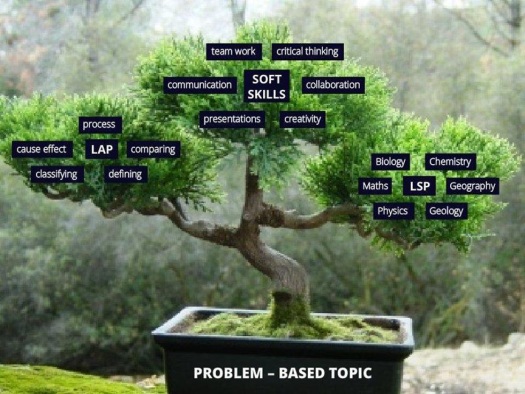
Figure 1: This bonsai scheme demonstrates the way the course was organized. It included three parts: soft/transferable skills, academic language (LAP) and content-based language (LSP − language for specific purposes) (taken from Němcová et al., 2015, p. 45).
The following is a list of the specific course objectives, which served to determine what skills and knowledge the students should be able to acquire by the end of the course:
- improve their understanding of the interdisciplinary relations in science
- cooperate and communicate in intra and interdisciplinary scientific teams
- become better at communication in English
- improve their presentation skills (present their results to scientists from other fields in a relevant way)
- think critically
- explore an authentic problem of a region
- use English as a communication tool
- write scientific abstracts with the help of language corpora, accessed through Sketch Engine (Masaryk University corpus linguistics tool)
- present at conferences
- organize a student conference (assign roles and responsibilities, meet deadlines, design a programme, compile a book of abstracts).
The course was evaluated both by the two teams of disciplinary experts and ESP specialists as well as the students at the end of the course. The former evaluation was carried out in the form of modified SWOT (strengths, weaknesses, opportunities, and threats) analysis. The latter evaluation – provided by the students themselves – was also incorporated into the SWOT analysis under weaknesses.
Generally, students were satisfied with the course in terms of the teaching methodology, content, and language. They especially valued group work in mixed teams because they were able to learn about the other disciplines. They found presentation practice, abstract writing and corpus activities interesting, useful and important for their future careers. The overall evaluation included words of praise such as ‘friendly atmosphere’; ‘supportive teachers’; ‘new’, ‘creative’ and ‘non-standard teaching methods’, ‘new friends’. Table 1 contains an extract taken from students’ anonymous feedback provided after the course was finished.
Table 1: Extract from students’ feedback (language mistakes were left uncorrected).
| Balance of language and science | I think that language and science sections were quite pretty balanced in this course. |
| Topic | At first there was too much of biology and cyanobacteria, but then, as a conference was approaching, I started to like this topic.
Despite the fact that I wasn't interested in this topic at the beginning of the course, it caught me during the semester. |
| Work in mixed teams | This was really excellent and I enjoyed working in mixed teams, it isn't so well organized in other courses. |
| Interdisciplinarity | I have really loved to listen and study about stuff from another scientific fields in the course. Only thing I has missed was deeper interdisciplinary cooperation. For example explanation of photosynthesis by biologist/chemist (teachers or even students) in each group and solving related problem in groups. |
| Conference organisation | Conference was prepared in very professional way.
I'm not aware of any major problems. As far as I know everybody did his/her job and we prepared everything on time.
Super super super. |
| Final student conference | Despite my expectations it was interesting, most of speakers were natural and it gave me many experience for my further studies
I was little afraid, that it would be bad, but to be honest it was the best part of the seminar
I enjoyed the course, it was fun and learning in one. Teachers were very nice. I was very satisfied with cooperation and friendly atmosphere in this course.
I will just simply recommend this course to all my friends! Hopefully will continue:)
Sometimes it took too much time to manage all the task and homework given
Sometimes it was quite difficult to do everything on time, especially final project and presentation. It required more than few hours each week.
I would just say that some of the deadlines were a little bit strange. I would have expected them to be on, say, Thursday midnight, but then I guess you had your reasons for making them like they were. |
On the other hand, there were certain aspects of the course that the students found less effective, important, or relevant. Generally, the students complained of insufficient amounts of time to practice presentations, write abstracts and work with the corpus tool. This problem was resolved by adding more practice with regard to these course areas. However, this change required the students to spend more time on home assignments, e-learning activities and generally home preparation, as the possibilities of what was manageable to practice and somehow finish within the duration of the course was rather limited. Among the other critical comments were the following: ‘biology and chemistry were dominant, some topics were not covered satisfactorily, chaotic and hectic (conference organization), too many students participated in the course, etc.’ Table 2 illustrates an extract from the SWOT analysis carried out as a response to the negative students’ feedback.
Table 2: Extract from modified SWOT analysis, in which strengths, weaknesses, and strategies (for improvement) were analyzed (adapted from Němcová et al., 2015, pp.60-63).
| STRENGTHS | WEAKNESSES | STRATEGIES |
| Topic: Brno Reservoir and cyanobacteria | Some students liked the topic, it was new, and they learnt new things. | Some argued that it was too narrow, especially for some disciplines (mathematics, physics) | The concept of the course will change - introduction to the topic base on more general background information. |
| Balance of language and science | Some students were satisfied. | Some expected more science, some expected more language. | It is necessary to repeat what the main objectives of the course are. |
| Conference organization | Good experience. | Chaotic, hectic. | Change of timing, necessary to meet strict deadlines. |
| Teaching materials, handouts | Very good, both science and language practice. | Some topics were not covered satisfactorily. | Teachers will provide the students with adequate sources. |
| Presentation skills | Students appreciated the opportunity to practice presentations. | Some presentations were too specific, bad presentation skills. | More time needs to be spent on the input, practice and feedback. |
The paper reported on an interdisciplinary language course for science students, based on three pedagogical approaches, namely collaborative learning, problem-based learning, and content and language integrated learning. Each of the approaches contributed enormously to the success of the course in that they encouraged and challenged the students to achieve higher learning goals such as developing their soft skills, improving their general academic and discipline-specific language and investigating an authentic scientific problem. The end-of-course evaluation revealed both positive and negative aspects of the course. Among the positive evaluations that dominated were course features considered unique, namely interdisciplinary awareness, simultaneous content and language learning, and acquisition of knowledge and skills important for scientists in the 21st century. Among the negative evaluations were those typically found in traditional courses as well, namely a lack of time for more focused practice, idiosyncratic preferences regarding how much language and content should be included in the course and the dominance of certain disciplinary subject matter over others.
Even though the preparations and the first run of the course were demanding, placing high requirements on time, interpersonal skills and team work, all the course instructors found the experience rewarding and valuable for their career development. The following two runs of the course, the positive feedback which the team was given by the students and colleagues, and the interest it raised in experts from the field, showed us that this project activity was meaningful. It proved the importance of piloting the course, helped us to improve our interpersonal communication and enabled us to build a strong team spirit while learning to reach a common objective in a content-based collaborative course, an area new to us. Overall, it was a rewarding and worthwhile experience for all the team members, which will motivate us to integrate some of the aspects of collaborative, content and language integrated, and problem-based learning into our everyday work at the university.
Boud, D. and Feletti, G. (1997). The Challenge of Problem-Based Learning. London and New York: Routledge.
Bruce, I. (2011). Theory and Concepts of English for Academic Purposes. Palgrave Macmillan.
Coyle, D., Hood, P., and Marsh, D. (2010). CLIL Content and Language Integrated Learning. Cambridge: Cambridge University Press.
Howard, A., McDonald, A. T., Kneale, P. E., & Whitehead, P. G. (1996). Cyanobacterial (blue-green algal) blooms in the UK: A review of the current situation and potential management options. Progress in physical geography, 20(1), 53-61.
Mankiewicz-Boczek, J., Kokociński, M., Gagała, I., Pawełczyk, J., Jurczak, T., & Dziadek, J. (2012). Preliminary molecular identification of cylindrospermopsin-producing Cyanobacteria in two Polish lakes (Central Europe). FEMS microbiology letters, 326(2), 173-179.
Němcová, H. et al. (2015). Collaborative Teaching and Learning in an Interdisciplinary Problem-Based Language Course. Brno: Masarykova univerzita. Available online: https://munispace.muni.cz/index.php/munispace/catalog/book/747
Swales, J. M., and Feak, C. B. (2013) English in Today’s Research World. A Writing Guide. Ann Arbour: The University of Michigan Press.
Totten, S., Sills, T., Digby, A., and Russ, P. (1991). Cooperative learning: A guide to research. New York: Garland
Walker, A. et al. (eds.) (2015). Essential Readings in Problem-Based Learning: Exploring and Extending the Legacy of Howard S. Barrows. West Lafayette: Purdue University Press.
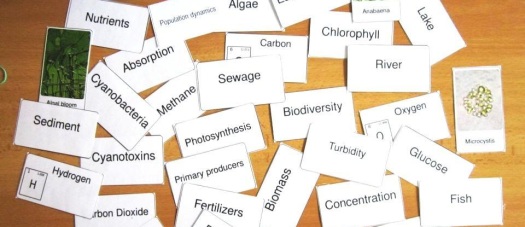
Figure 2: To create a shared understanding of a concept, students were encouraged to find relations between items with the help of an affinity map (also called affinity diagram: dividing data into groups based on possible relationships, used for brainstorming ideas) (taken from Němcová et al., 2015, p. 47).
This is a follow-up to the biology-based lesson dealing with cyanobacteria.
LIFE CYCLE OF CYANOBACTERIA
1. Do you remember what type of cells heterocysts and akinetes are?
Clue: cells, specialized, nitrogen, fix cells, thick, wall, nitrogen, fix, survive, conditions, harsh
2. Read the text about the cyanobacterial life cycle and complete the missing words limitation and availability into the scheme below.
Vegetative cells grow only until nitrogen depletion forces them to build heterocysts, thus enabling the cells to grow further by nitrogen fixation. At the end of summer vanishing light prevents further growth; some of the cells differentiate into akinetes, the resting spores which sink to the bottom where they take up nutrients and mature during winter and spring. Finally, if the conditions are sufficiently favourable the cells germinate and begin to rise to the surface with the help of gas vacuoles. Here, light is abundant and growth of vegetative cells takes place, starting the life cycle again.
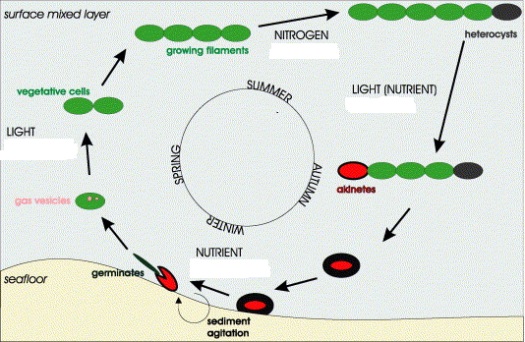
Figure 3: Life cycle of cyanobacteria (adapted from: http://www.slideshare.net/mksateesh/mks-cyanobacteria)
3. Noun phrases
In academic writing it is more common to use noun phrases rather than verbal structures.
Example: the population increases → there is an increase in population
Transform the lifecycle items into nominal (noun) phrases. The first two are done for you.
| Noun phrases |
| cells germinate | cell germination, germination of cells |
| temperature increases | temperature increase, increase in temperature |
| light is available | |
| to form blooms | |
| cells germinate | |
| to slowly take up nutrients | |
| cells are transferred | |
| cells differentiate | |
| temperature increases | |
| nutrient uptake is limited | |
| vegetative cells grow | |
4. Describe the lifecycle of cyanobacteria. Use various sequencing markers describing a process.
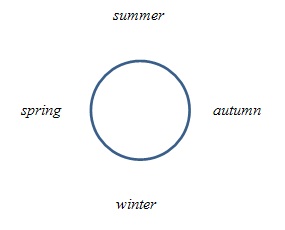
- firstly, first of all, the first stage is, to begin with, initially;
- before this, prior to this, earlier, previously;
- at the same time, during, simultaneously, when this happens, while;
- after this, (in) the next stage, in the following stage, subsequently, later, following this, later;
- eventually, lastly, finally, in the last stage, until, finishes with
During the course, students became familiar with some basics of conference organization. They learnt what to do, what to say, how to assign roles and responsibilities, prepare a programme and compile a book of abstracts. They might apply all this to organizing their own conferences in the future. These are the 2014 conference sections with the topics of students’ presentations:
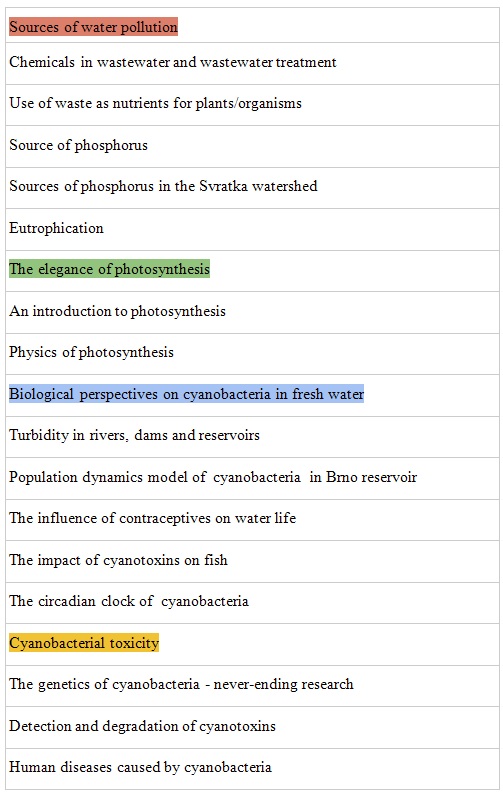
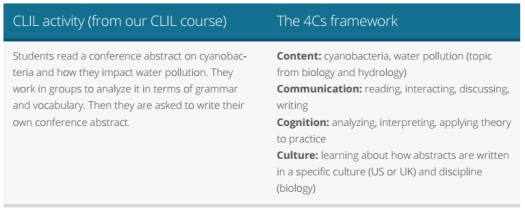
Figure 4: 4Cs analysis (taken from Němcová et al., 2015, p. 24)

Please check the English Language Improvement for Teachers course at Pilgrims website.
Please check the English Language Improvement for Adults course at Pilgrims website.
Please check the Creative Methodology for the Classroom course at Pilgrims website.
Please check the CLIL: Content and Methodology for Universities at Pilgrims website.


|